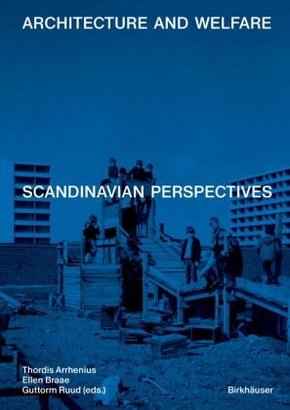Architecture and Welfare - Scandinavian Perspectives
| Verlag | Birkhäuser Berlin |
| Auflage | 2025 |
| Seiten | 392 |
| Format | 15,0 x 3,2 x 21,0 cm |
| Gewicht | 1029 g |
| Artikeltyp | Englisches Buch |
| ISBN-10 | 3035627967 |
| EAN | 9783035627961 |
| Bestell-Nr | 03562796A |
In den Jahrzehnten nach dem 2. Weltkrieg wurden in ganz Europa ehrgeizige Bauprogramme zur Sicherung des sozialen Wohlstands aufgelegt. Insbesondere Skandinavien durchlief eine intensive Modernisierungsphase mit dem Ziel, den Wohlstand gleichmäßig zu verteilen. Allerdings verlief die Entwicklung in den Ländern Dänemark, Schweden und Norwegen unterschiedlich, und ihre Wohlfahrtsmodelle wurden im Laufe der Zeit verändert, angefochten wie auch kopiert. In diesem Buch wird untersucht, wie Architektur, die einst als Medium für allgemeines Wohlergehen, Inklusion und politische Teilhabe galt, heute oft mit dem Gegenteil, also Entfremdung, Ausgrenzung und Segregation, in Verbindung gebracht wird. Der Band bietet neue Perspektiven auf die Geschichte und Neugestaltung von Nachkriegsarchitektur und Urbanität.
Mit attraktiven Fotoessays zum sozialen Wohnungsbau in Skandinavien Basierend auf einem interdisziplinären Forschungsprojekt der KTH Stockholm, der Oslo School of Architecture und der Universität Kopenhagen International renommierte Autoren beleuchten Aspekte der Beziehung zwischen Architektur und Wohlergehen
Architecture was fundamental to the realization of welfare state policy in the Nordic countries, translating democratic ideals into concrete spatial materializations. An inclusive notion of "welfare for all" was embraced by a generation of architects, landscape architects, and planners, who labored to give physical form to ideas of equality, collectivity, and
democracy, producing a vast architectural output in Scandinavia during the postwar years. Today, however, the architectural legacy of this era is contested. Welfare for all no longer enjoys the social or political consensus it once did.
This publication critically engages with this contested architectural legacy and provides a nuanced portrait of postwar welfare architecture coming to terms with a contentious past and facing an uncertain future
With newly commissioned photographic work by contemporary Nordic artists Based on an interdisciplinary research project by KTH Stockholm, Oslo School of Architecture, U niversity of Copenhagen Internationally renown contributors shed light on aspects of the relationship between architecture and welfare

